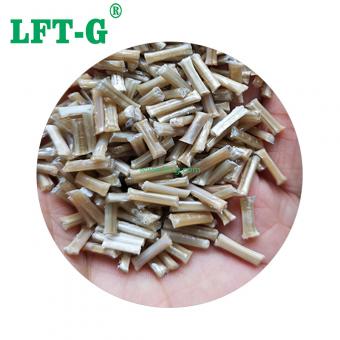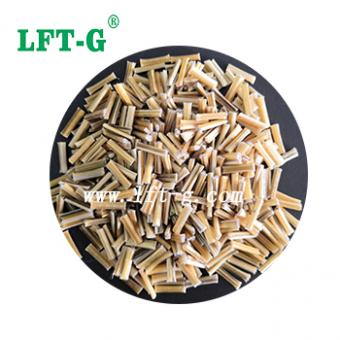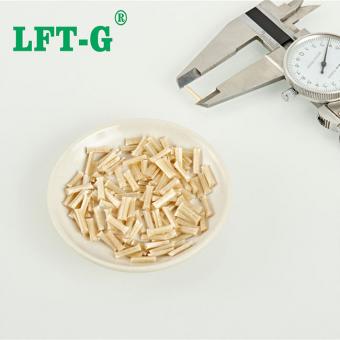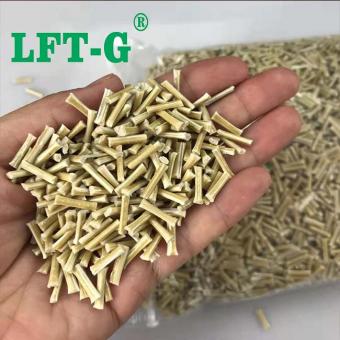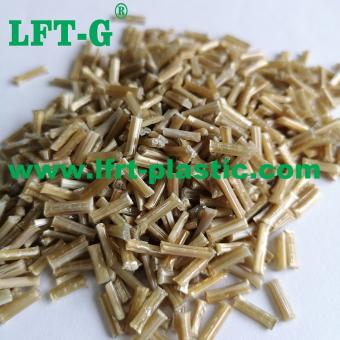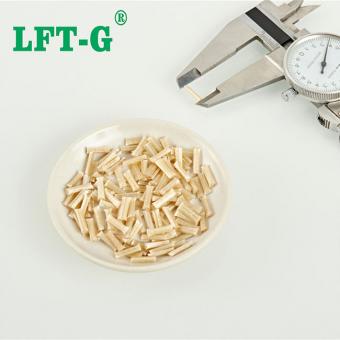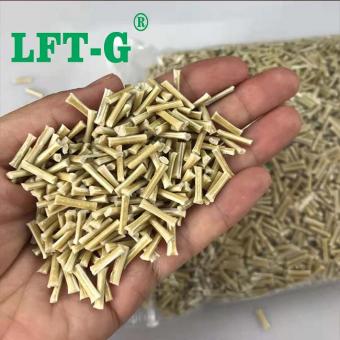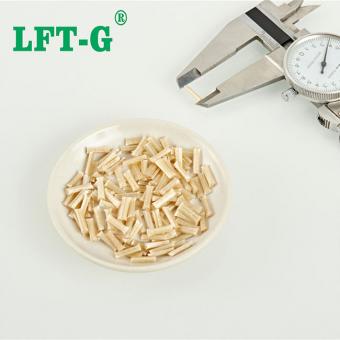-
sulfure de polyphénylène modifié chargé de fibres de verre longues renforcées par ppsingénieur rempli de fibres de verre longues renforcéesest un type de matériaux plastiques d'ingénierie modifeid de pps long renforcé de fibre de verre
- fibre de verre longue remplie de polyester
- résine de polyphénylène sulfure pps
- pps lgf
- matériaux composites modifiés
- plastique renforcé thermoplastique
Tags :
-
pps en polymère de fibre de verre pps lgf40 granulés de matières premièrespps en polymère de fibre de verre pps lgf40 granulés de matières premières.
- pps polymère
- pps résine granulaires
- plastique pps lgf40
- pps résine granulaires prie
- pps granulés
- pps lgf40 granulés de matières premières
Tags :
-
LFT PPS granules composites thermoplastiques à fibres de verre longuesPPS granules thermoplastiques renforcés de fibres de verre longues pour l'introduction et les propriétés
- fibre de verre pps matière thermoplastique
- pps moulage de fibre
- pps lgf fibres de verre
- couleur naturelle pps lgf composite
- PPS granulés de fibre de verre polymère
- granulés vierges thermoplastiques PPS
Tags :
-
Granulés thermoplastiques renforcés LFT PPS LGF20% pour équipements aéronautiquesnom du produit: PPS fibre de verre longue 20% composite , matériaux PPS lft longueur : environ 12 mm , personnaliser 5-25 mm
- Composite de fibres de verre longues PPS
- Polymère PPS
- SPP LGF
- Granulés composites PPS
- LFT PPS LGF
- SPP LFT
Tags :
-
LFT PPS LGF30% remplissage de fibres de verre Granulés de polymère PPSnom du produit : fibre de verre longue 30 % de remplissage PPS, polymère LFT PPS longueur : environ 12 mm application: pièces automobiles , composants énergétiques et autres pièces en plastiqueAfficher plus
-
Composite thermoplastique LFT fibres longues PPS LGF40%nom du produit: fibre de verre longue 40% de remplissage pps longueur : environ 12 mm application: pièces automobiles , composants énergétiques et autres pièces en plastique
- Fibre de verre LFT PPS 40%
Tags :
-
LFT-G PPS sulfure de polyphénylène LGF fibre de verre composite longue fibre de verre personnalisée plastiques techniquesWhat is the PPS? Polyphenylene sulfide (PPS) is a new thermoplastic resin with high performance. By filling, modified with excellent high temperature resistance, corrosion resistance, wear resistance, flame retardant, balanced physical and mechanical properties and excellent dimensional stability and excellent electrical properties and other characteristics of the new high performance thermoplastic resin, as well as high mechanical strength, chemical resistance, flame resistance, good thermal stability, excellent electrical properties and other advantages. It has the advantages of hard and brittle, high crystallinity, inflammability, good thermal stability, high mechanical strength, excellent electrical properties, strong chemical corrosion resistance and so on. The mechanical properties of pure PPS are not high, especially the impact strength is relatively low. Good creep resistance under load, high hardness; High wear resistance, the wear at 1000 RPM is only 0.04g, and will be further improved after filling F4 and molybdenum disulfide; It also has a certain degree of self-moistening. The mechanical properties of PPS are less sensitive to temperature. What is the PPS-LGF? PPS is one of the best varieties of heat resistance in the engineering plastic department. The thermal deformation temperature of the material modified by glass fiber is generally greater than 260 degrees, and the chemical resistance is second only to PTFE. In addition, it also has small shrinkage, low water absorption, good fire resistance. Good resistance to vibration fatigue, strong resistance to arc, especially at high temperature. Excellent electrical insulation in high humidity. But its disadvantages are brittleness, toughness, low impact strength, after modification, can overcome the above shortcomings, obtain very excellent comprehensive performance. As a plastic, its properties and uses far exceed those of ordinary plastics, and in many ways it is as good as metal materials. Excellent material PPS has the advantages of high temperature corrosion resistance, excellent mechanical properties, can replace metal including stainless steel, copper, aluminum, alloy, etc., is considered to be the best substitute for metal, copper. What is the application of PPS-LGF? PPS is now widely used in automotive, aerospace, household appliances, mechanical construction and chemical industry for a variety of structural parts, transmission parts, insulation parts, corrosion resistant parts and seals. Under the condition of ensuring sufficient strength and other properties, the weight of the product is greatly reduced. Datasheet for reference Details Number Color Length MOQ Package Sample Delivery time Port of Loading PPS-NA-LGF30 Original color (can be customized) 5-25mm above 25kg 25kg/bag Available 7-15 days after shipment Xiamen Poer Processus de production Marques et brevets _ Equipes et clients _ Nous vous proposerons : 1. Paramètres techniques des matériaux LFT et LFRT et conception de pointe 2. Conception de l'avant du moule et recommandations 3. Fournir un support technique tel que le moulage par injection et le moulage par extrusion.
- PPS Fibre de verre longue 40
- composés pps lgf
- matériaux de résine pps lft
- plastique renforcé pps lft-g
- pps de remplissage de fibres de verre longues
- résine thermoplastique pps lgf
Tags :
-
Remplissage en plastique Xiamen LFT-G PPS Fibre de verre longue 94-VO composite LGF ignifuge 12mm environPPS The molecular structure of PPS consists of benzene ring and sulfur atoms interarranged, the configuration is orderly, easy to form a high thermal stability of the crystal structure. At the same time, the molecular structure of PPS material has a highly stable chemical bond characteristics, the benzene ring structure makes PPS more rigid, and the sulfur ether bond (-S-) provides a certain degree of flexibility. PPS itself has good heat resistance, flame retardant, chemical resistance, should be a promising material, but unmodified PPS has some unavoidable defects: Difficult processing: This is the biggest pain point of all high temperature resistant materials -- high processing temperature, no matter the molding process or processing energy consumption, will face great challenges. In addition, PPS is still prone to thermal oxidation crosslinking in the melting process, resulting in reduced fluidity and further improve the processing difficulty; Poor toughness: PPS molecular chain is rigid, the maximum crystallinity is as high as 70%, the elongation is low and the welding strength is not so good. As a result, the impact resistance of unmodified PPS is poor, which limits the application scope. High cost: PPS raw materials and general engineering plastics compared, the price is about 1-2 times higher, and some modified materials compared with low cost performance; Difficult coating: PPS surface coating and coloring performance is not ideal. While this is not a major problem for now, it is a limiting factor. PPS-LGF Long glass fiber reinforced composites can solve your problems when other methods of reinforced plastics do not provide the performance you need or if you want to replace metal with plastic. Long glass fiber reinforced composites can cost-effectively reduce the cost of goods and effectively improve the mechanical properties of engineering polymers, and increase the durability by forming long fibers to form a long-fiber-reinforced internal skeleton network. Performance is preserved in a wide range of environments. TDS pour référence Application À propos de nous Xiamen LFT composite plastic Co., Ltd. est une société de marque qui se concentre sur LFT & LFRT. Série de fibres de verre longues (LGF) et série de fibres de carbone longues (LCF). Le LFT thermoplastique peut être utilisé pour le moulage par injection et l'extrusion LFT-G, et peut également être utilisé pour le moulage LFT-D. Il peut être produit selon les exigences du client : 5~25mm de longueur. Les thermoplastiques renforcés par infiltration continue à fibres longues de la société ont passé la certification du système ISO9001 et 16949, et les produits ont obtenu de nombreuses marques et brevets nationaux.
- sulfite de polyphénylène à fibres de verre longues
- thermoplastiques renforcés de fibres longues
- composés de fibres longues pps
- pps lgf30
- granulés de pps composites à fibres longues
- sulfite de polyphénylène renforcé de fibres de verre longues
Tags :
-
LFT haute performance modifié PPS remplissant de longs composés de fibre de verre échantillon disponible blanc naturel 12mmPolyphenylene sulfide PPS is one of the typical representatives of special engineering plastics, with a linear structure of alternating benzene rings and sulfur atoms. In the condensed structure, PPS is easy to crystallize, crystallinity of nearly 70%, therefore, has good thermal stability, chemical stability and dimensional stability, etc. PPS mainly has the following five performance advantages. (1) excellent heat resistance. pps melting point of more than 280 ℃, heat deflection temperature of more than 260 ℃, and after high-temperature heat aging treatment, the strength retention rate is high. (2) since the flame retardant. PPS itself has flame retardant, without adding flame retardants flame retardant level can reach UL94 V- 0 level. (3) good mechanical properties. PPS is a brittle material, has good creep resistance, high surface hardness, good wear resistance, and carbon fiber and other materials compound, but also shows good self-lubricating properties. (4) excellent chemical resistance, irradiation resistance. pps below 200 ℃ almost insoluble in any solvent, can withstand almost all inorganic substances, radiation dose up to 108Gy. (5) good processing properties. pps melt viscosity is low, as the resin matrix of composite materials, for the reinforcement of the flow of excellent wetting effect. As PPS has the above performance advantages, and compared to other high-performance thermoplastic resins and easy processing, low cost, so become an excellent resin matrix for the manufacture of composite materials. Long glass fiber Glass fiber is an inorganic non-metallic material with excellent performance, is a natural mineral with silica as the main raw material, add specific metal oxide mineral raw materials, mixed evenly, molten at high temperature, molten glass liquid flow through the funnel outflow, in the role of high-speed pull gravitational force is drawn and rapidly cooled and cured into a very fine continuous fiber. Glass fiber monofilament diameter from a few microns to more than twenty microns, equivalent to a hair of 1/20-1/5, each bundle of fiber original filament are composed of hundreds or even thousands of monofilaments. Glass fiber basic properties: The appearance of a smooth cylindrical surface, the cross-section is a complete circle, round cross-section to withstand the load capacity; gas and liquid through the resistance is small, but the surface is smooth so that the holding force of the fiber is small, not conducive to the combination with the resin; density is generally in 2.50-2.70 g/cm3, depending mainly on the glass composition; tensile strength than other natural fibers, synthetic fibers to be high; brittle materials, the elongation at break is very small ; water resistance and acid resistance is good, while alkali resistance is poor. It can be divided into continuous glass fiber, short glass fiber (SGF) and long glass fiber (LGF) by length classification. Long glass fiber is the most widely used glass fiber at present. And Xiamen LFT plastic composite company is focuses on the produce of long glass fiber compounds for many years. SGF VS LGF 1. The difference in size length Engineering materials long glass fiber and short glass fiber, literally means the difference in size length; more common short glass fiber size is about 0.2mm-0.6mm between; long glass fiber size is about 6mm-25mm between. 2. Performance strength differences Different lengths of glass fibers are different in their performance strength, the fiber length of long glass fibers in the composite material inside the impact strength than short glass fibers stronger. 3. Production process is different Production of long glass fiber, high requirements for raw materials, especially the manufacturing process requires the surface of glass fiber to be activated, the processing can not be flooded with glass fibers, as well as external leakage phenomenon occurs. Production of short glass fiber, because the size is generally no special requirements, so the production is relatively easy, the requirements for raw materials are not so high, the production costs for manufacturers low. 4. Different production and processing methods Long glass fiber production and processing methods generally use injection molding and molding; while most short glass fiber injection molding method. Product process TDS for reference only Details Number Color Length Sample Packing MOQ Port of Loading Delivery time PPS-NA-LGF40 Couleur d'origine (ou selon vos besoins ) 12mm (ou selon vos besoins) Disponible 25kg/sac 25kg Port de Xiamen 7 ~ 15 jours après l'expédition Pourquoi nous choisir 1. Paramètres techniques des matériaux LFT et LFRT et conception de pointe 2. Conception de l'avant du moule et recommandations 3. Fournir un support technique tel que le moulage par injection et le moulage par extrusion.
- PPS polyphénylent
- pastille lgf pps renforcée de fibre de verre
- thermoplastique renforcé de granulés vierges de pps
- granulés de fibre de verre en plastique pps lgf40
Tags :
-
Le sulfure de polyphénylène de LFT-G PPS compose la couleur originale de longs granulés de fibre de verre pour l'appareil ménagerGarnissage polyamide 12 fibres de verre longues La température de travail à long terme recommandée de la résine de sulfure de polyphénylène (PPS) est de 220 ~ 240℃. Le matériau a une bonne stabilité thermique et ses propriétés mécaniques restent à environ 80 % et 60 % de leurs valeurs d'origine à 100°C, 160°C et 200°C, respectivement. Le matériau a une excellente résistance au fluage et à la fatigue à température ambiante. Le matériau a également une excellente résistance aux acides, alcalis, sels, solvants organiques et autres milieux, à l'exception des acides oxydants et des milieux oxydants forts, et est presque insoluble dans tout solvant chimique en dessous de 170°C. Il est particulièrement adapté à l'acide fluorhydrique, aux hydrocarbures halogénés et à la résistance à la corrosion par les ions chlorure. Le PPS est un matériau ignifuge avec un indice d'oxygène de 46 à 53, meilleur que la plupart des plastiques techniques. Le sulfure de polyphénylène a une résistance élevée et des propriétés électriques à faible constante diélectrique, et peut conserver de bonnes propriétés électriques dans des conditions de température élevée et d'humidité élevée. De plus, les propriétés mécaniques du matériau en résine ne sont pas très exceptionnelles car il a une bonne affinité avec la fibre de verre, la fibre de carbone, la charge inorganique et le lubrifiant solide, et la modification est bonne, de sorte que les particules utilisées dans le moulage par injection sont principalement modifiées et renforcées. par diverses fibres et charges inorganiques. LGF et SGF Particules de nylon de fibre de verre ordinaire : la taille est d'environ 3 à 4 mm, rapport longueur/largeur de 50 à 250 Particules de nylon à fibre de verre longue : la taille est d'environ 10 à 12 mm, rapport d'aspect > 400 De plus, la répartition de la fibre de verre dans les deux types de particules est également différente. Comparé au SGF, le LGF a amélioré la rigidité, la résistance et le module, en particulier les performances d'impact entaillées ont été grandement améliorées. Comparé au SGF, le LGF a amélioré la rigidité, la résistance et le module, en particulier les performances d'impact entaillées ont été grandement améliorées. Le taux de rétention de rigidité de la fibre de verre longue est meilleur que celui de la fibre de verre courte, et la fibre de verre longue est plus résistante au vieillissement thermique. Les performances de fluage sont affectées par le temps, la température et la charge. À une charge de 120 ℃ et 40 MPa, le fluage de la fibre de verre longue est nettement meilleur que celui de la fibre de verre courte. Ceci est essentiel pour les pièces soumises à une pression statique à long terme, et la fibre de verre longue peut être essayée lorsque la fibre de verre courte ne peut pas répondre aux exigences. Le retrait est crucial pour la taille de la pièce. Le rétrécissement transversal du matériau en fibres de verre courtes est beaucoup plus élevé que le rétrécissement longitudinal, et l'anisotropie est plus grave, ce qui rend difficile le contrôle de la taille de la pièce et un rétrécissement évident. En revanche, les taux de retrait transversal et longitudinal des matériaux à fibres de verre longues sont très proches, montrant une isotropie, améliorant le risque de gauchissement des pièces et rendant les dimensions plus contrôlables. Processus de produit Certificat Certification du système de gestion de la qualité ISO9001/16949 Certificat national d'accréditation de laboratoire Entreprise d'innovation en matière de plastiques modifiés Certificat honorifique Tests REACH et ROHS sur les métaux lourds À propos de nous Xiamen LFT composite plastic Co. , Ltd. est une société de marque qui se concentre sur LFT & LFRT. Série de fibres de verre longues (LGF ) et série de fibres de carbone longues (LCF ). Le LFT thermoplastique de la société peut être utilisé pour le moulage par injection et l'extrusion LFT-G, et peut également être utilisé pour le moulage LFT-D. Il peut être produit selon les exigences du client : 5~25mm de longueur. Les thermoplastiques renforcés par infiltration continue à fibres longues de la société ont passé la certification du système ISO9001 et 16949, et les produits ont obtenu de nombreuses marques et brevets nationaux. Principaux produits
- PPS renforcé fibre de verre longue pour accessoires électriques
- meilleurs granulés de fibres de verre longues pps lgf40
- lft-g pps résine lgf
- pps granulés lgf40
- Matériaux modifiés pps 40
- Sulfure de polyphénylène PPS anti-vieillissement
Tags :
-
Composite thermoplastique PPS LGF40% à fibres longues de sulfure de polyphénylène LFTNom du produit : fibre de verre longue, remplissage à 40 % PPS Longueur: environ 12 mm Application : pièces automobiles, composants énergétiques et autres pièces en plastiqueAfficher plus
-
LFT-G PPS sulfure de polyphénylène LGF composite longue fibre de verre plastiques techniques personnalisésQu'est-ce que le PPS ? Le sulfure de polyphénylène (PPS) est une nouvelle résine thermoplastique à hautes performances. Par remplissage, modifié avec une excellente résistance aux températures élevées, une résistance à la corrosion, une résistance à l'usure, des propriétés physiques et mécaniques ignifuges, équilibrées et une excellente stabilité dimensionnelle et d'excellentes propriétés électriques et d'autres caractéristiques de la nouvelle résine thermoplastique haute performance, ainsi qu'une résistance mécanique élevée, résistance chimique, résistance aux flammes, bonne stabilité thermique, excellentes propriétés électriques et autres avantages. Il présente les avantages d'une cristallinité dure et cassante, élevée, d'une inflammabilité, d'une bonne stabilité thermique, d'une résistance mécanique élevée, d'excellentes propriétés électriques, d'une forte résistance à la corrosion chimique, etc. Les propriétés mécaniques du PPS pur ne sont pas élevées, en particulier la résistance aux chocs est relativement faible. Bonne résistance au fluage sous charge, dureté élevée ; Haute résistance à l'usure, l'usure à 1 000 tr/min n'est que de 0,04 g et sera encore améliorée après le remplissage de F4 et de bisulfure de molybdène ; Il possède également un certain degré d’auto-humidification. Les propriétés mécaniques du PPS sont moins sensibles à la température. Qu'est-ce que le PPS-LGF ? Le PPS est l’une des meilleures variétés de résistance à la chaleur dans le département des plastiques techniques. La température de déformation thermique du matériau modifié par la fibre de verre est généralement supérieure à 260 degrés et la résistance chimique est juste derrière le PTFE. De plus, il présente également un faible retrait, une faible absorption d'eau et une bonne résistance au feu. Bonne résistance à la fatigue vibratoire, forte résistance à l’arc, notamment à haute température. Excellente isolation électrique en cas d'humidité élevée. Mais ses inconvénients sont la fragilité, la ténacité, la faible résistance aux chocs, après modification, peuvent surmonter les défauts ci-dessus et obtenir de très excellentes performances globales. En tant que plastique, ses propriétés et ses utilisations dépassent de loin celles des plastiques ordinaires et, à bien des égards, il est aussi performant que les matériaux métalliques. Excellent matériau, le PPS présente les avantages d'une résistance à la corrosion à haute température, d'excellentes propriétés mécaniques, peut remplacer le métal, notamment l'acier inoxydable, le cuivre, l'aluminium, l'alliage, etc., est considéré comme le meilleur substitut au métal, le cuivre. Quelle est l’application du PPS-LGF ? Le PPS est désormais largement utilisé dans l’automobile, l’aérospatiale, les appareils électroménagers, la construction mécanique et l’industrie chimique pour une variété de pièces structurelles, de pièces de transmission, de pièces d’isolation, de pièces résistantes à la corrosion et de joints. À condition d'assurer une résistance suffisante et d'autres propriétés, le poids du produit est considérablement réduit. Fiche technique pour référence Détails Nombre Couleur Longueur MOQ Emballer Échantillon Délai de livraison Port de chargement PPS-NA-LGF30 Couleur originale (peut être personnalisée) 5-25mm au-dessus 25 kg 25 kg/sac Disponible 7-15 jours après expédition Poer de Xiamen Processus de production Marques et brevets _ Équipes et clients _ Nous vous proposerons : 1. Paramètres techniques des matériaux LFT et LFRT et conception de pointe 2. Conception de la façade du moule et recommandations 3. Fournir un support technique tel que le moulage par injection et le moulage par extrusion.Afficher plus

 email
email français
français English
English Deutsch
Deutsch русский
русский italiano
italiano español
español português
português العربية
العربية 日本語
日本語 한국의
한국의 中文
中文












